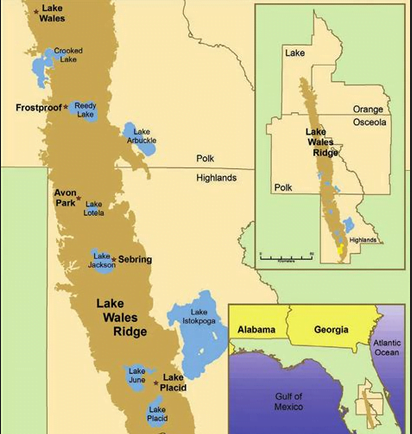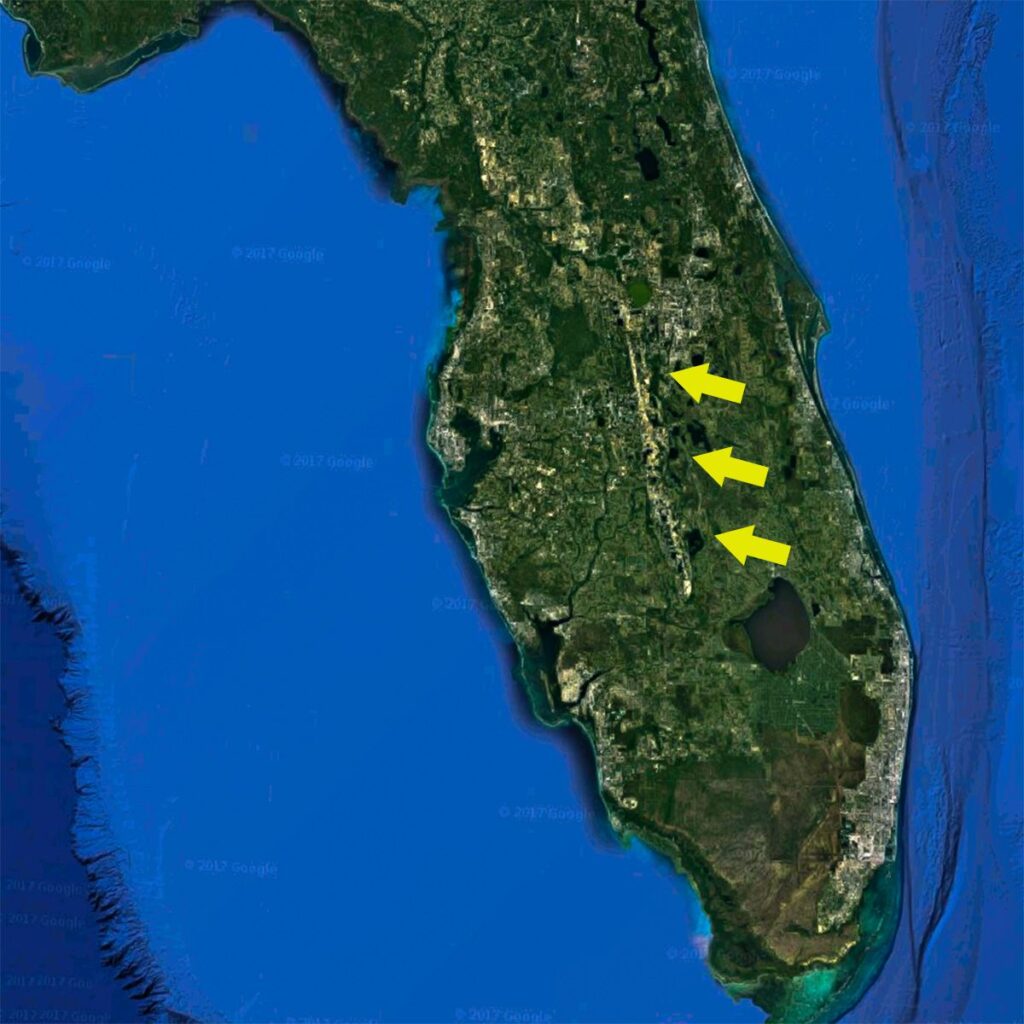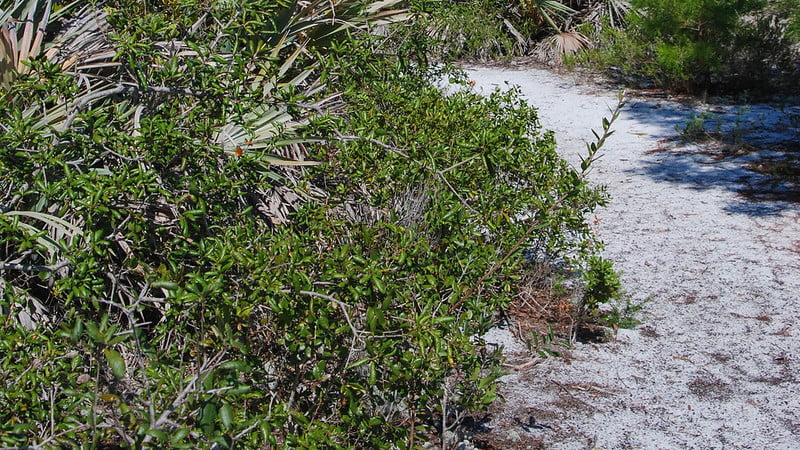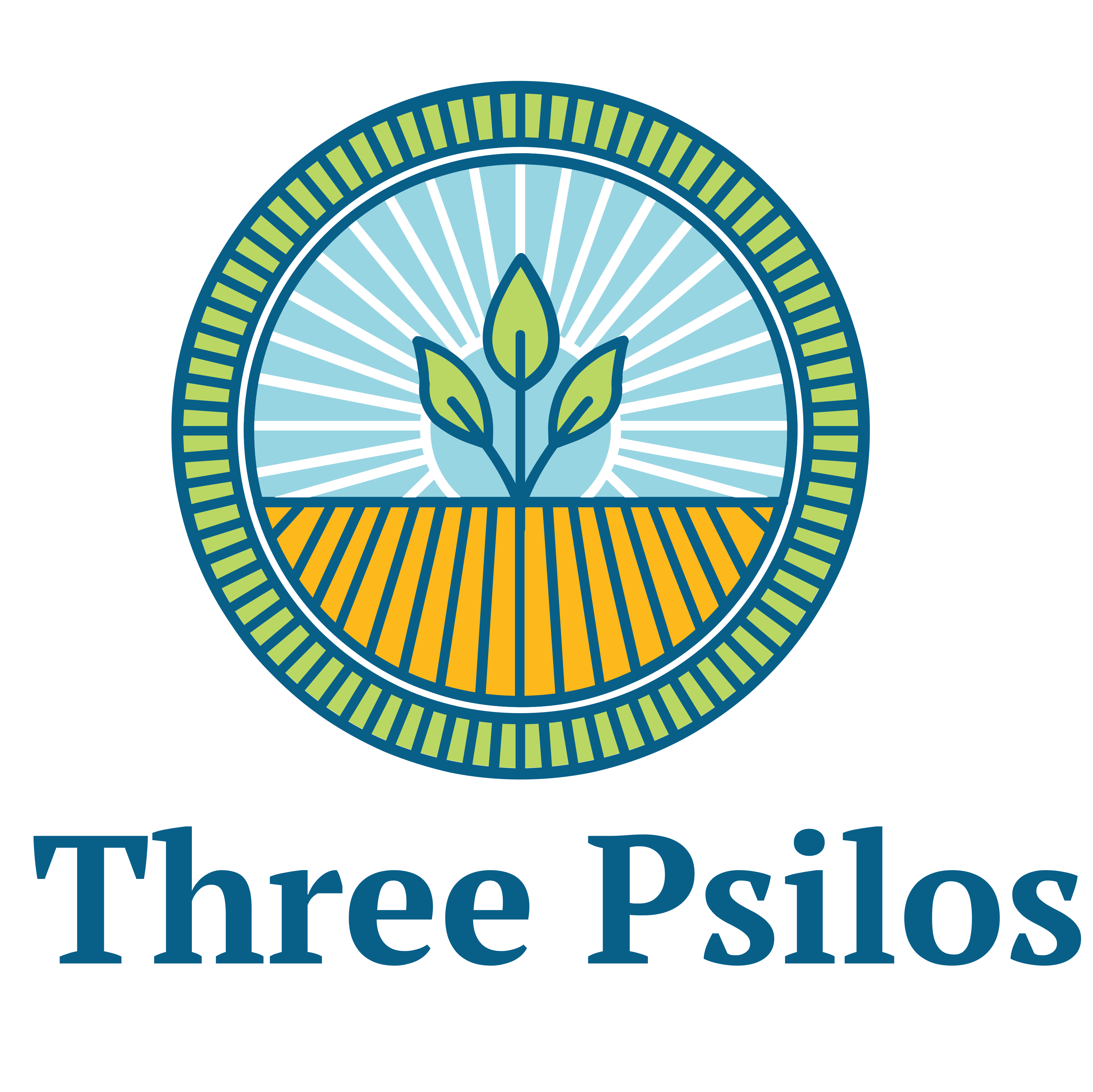Assuming any one particular desert was at some point forested, ecologists at Three Psilos, Inc. believe some of Florida’s native Oak species (Quercus) from the Lake Wales Ridge could potentially help reforest such a desert.
Why the Lake Wales Ridge?
The Lake Wales Ridge is a sandy ridge that runs parallel to the central portion of the Florida Peninsula, stretching from Polk County in the north to Highlands County in the south.

The ridge was formed as a result of ancient marine terraces, which were once ancient coastlines of Florida during periods of lower sea levels. These marine terraces were formed by the deposition of sand and sediment over millions of years. Over time, subsequent erosion and weathering processes shaped the sandy deposits into the distinct ridge we see today.

The Lake Wales Ridge is estimated to be around 2.5 to 5 million years old, based on geological studies and dating methods such as radiometric dating of volcanic ash layers and fossils found within the ridge. These ages suggest that the formation of the Lake Wales Ridge predates the development of other parts of Florida, including areas near Tampa or regions closer to sea level. This also gives those plant species from the area a huge advantage over a much longer period of time for various genetic mutations to handle ecological conditions and their ongoing changes.
The Lake Wales Ridge is characterized by well-drained sandy soils and a relatively low annual rainfall compared to other parts of Florida.
One of the key similarities between the Lake Wales Ridge and desert environments is the presence of sandy soils. The sandy soils found on the ridge are nutrient-poor and have low water-holding capacity, which can be reminiscent of desert soils. Additionally, the Lake Wales Ridge experiences higher temperatures and lower precipitation compared to other parts of Florida, which contributes to a drier microclimate.
Sand Live Oak (Quercus geminata)

Sand Live Oak’s adaptability to sandy soils makes it a potentially suitable species for reforestation efforts in desert areas that have lost their forests. Its ability to withstand harsh conditions, including drought and high temperatures, can be advantageous in restoring vegetation in arid environments.
Sand Live Oak’s dense canopy provides shade, helping to mitigate the effects of direct sunlight and reducing evaporation from the soil. This can contribute to moisture retention and support the establishment of other plant species in the reforestation process.
The leaves of Sand Live Oak (Quercus geminata) have certain characteristics that make them fire-retardant and aid in moisture retention within their environment. These adaptations contribute to the oak’s resilience in fire-prone ecosystems such as the sandy habitats found in the Lake Wales Ridge and other regions of Florida.
Sand Live Oak leaves have thick, leathery textures and waxy coatings, which are common features of fire-adapted plant species. These traits help reduce the flammability of the leaves and provide protection against heat and fire damage. The reduced flammability of the leaves allows the tree to withstand low-intensity fires more effectively.
Additionally, the thick leaves of Sand Live Oak contribute to moisture retention within the ecosystem. The leaves provide shade, reducing the direct exposure of the soil to sunlight and minimizing water loss through evaporation. This shading effect helps to maintain higher soil moisture levels, promoting better water availability for the oak tree itself and other plants in the surrounding area.
The combination of fire-retardant leaves and moisture retention capabilities enhances the resilience of Sand Live Oak and its ability to persist in fire-prone and drier environments. These adaptations are important factors in the overall ecosystem dynamics of the Lake Wales Ridge and other sandy habitats, such as deserts.
Furthermore, Sand Live Oak’s role in stabilizing sandy soils can be beneficial in preventing erosion and promoting soil conservation in desert regions. The extensive root system of this oak species helps bind the soil together, reducing the risk of wind and water erosion.
American Turkey Oak (Quercus laevis)
The American Turkey Oak is known for its resilience and ability to tolerate dry conditions, making it suitable for reforestation efforts in desert areas that have experienced forest loss. Its deep root system helps the tree access water sources even during droughts, aiding in its survival in arid environments. It is so tough, it acts as a lightning rod for the Florida Scrubs, arcing huge current from cloud to ground… and living through it.
This oak species provides several ecological benefits. Its canopy offers shade and shelter for wildlife, including birds and small mammals. The acorns produced by American Turkey Oak serve as a food source for various animals, contributing to the local food web. Moreover, the tree’s leaf litter enhances soil fertility and provides organic matter, supporting the growth of other plant species and promoting ecosystem health.
When considering reforestation projects in desert areas, the inclusion of American Turkey Oak can contribute to the restoration of diverse and resilient ecosystems. However, it is important to assess the specific environmental conditions, availability of water, and suitability of companion plant species to ensure the successful establishment and long-term survival of American Turkey Oak and the overall reforestation efforts.

Site Ecology Recommendation
Three Psilos, Inc. has a mission to restore Central Florida’s xeric upland Sandhill and Scrub communities on the Lake Wales Ridge, and on all the ridges… one day at a time.
We use “Applied Ecology” to help heal the land by introducing, removing, or managing certain species in effort to gain even more of our desired endemic species. If you live on or around the Lake Wales Ridge, or…

